Purslane is a versatile, nutrient-rich succulent that’s perfect for both culinary and medicinal uses. With its slightly tangy flavor, juicy leaves, and high content of omega-3 fatty acids, vitamins, and minerals, purslane has earned its place in salads, stir-fries, and traditional remedies. The best part? You don’t need a traditional garden to grow it. With bottle gardening, you can cultivate purslane easily at home using recycled plastic bottles, making it perfect for beginners and urban gardeners.
In this guide, we’ll show you the best method to grow purslane in plastic bottles, including how to propagate it from cuttings and care for it for maximum growth and yield.
1. What is Purslane?
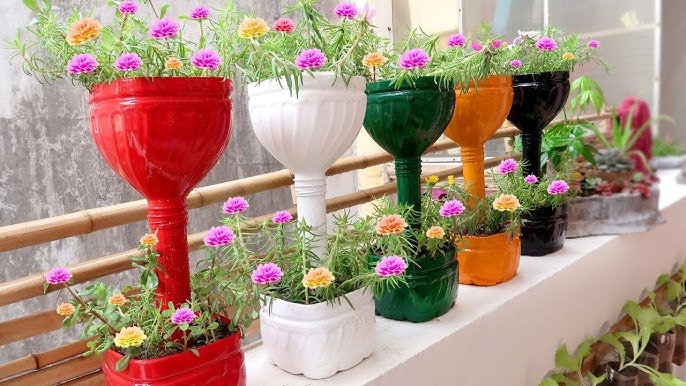
Purslane (Portulaca oleracea) is a low-growing succulent with fleshy stems and small, vibrant green leaves. It’s often considered a “weed” in some regions, but it’s highly nutritious and incredibly hardy.
Key features of purslane include:
- Flavor: Slightly tangy and lemony, great for salads, soups, and cooked dishes.
- Texture: Succulent, juicy leaves and stems.
- Growth habit: Spreads quickly, forming a dense mat of green foliage.
- Nutritional benefits: High in omega-3 fatty acids, vitamins A, C, and E, magnesium, potassium, and antioxidants.
- Medicinal uses: Known for anti-inflammatory properties and supporting heart and digestive health.
Its resilience and rapid growth make purslane an ideal candidate for container and bottle gardening.
2. Why Grow Purslane in Plastic Bottles?
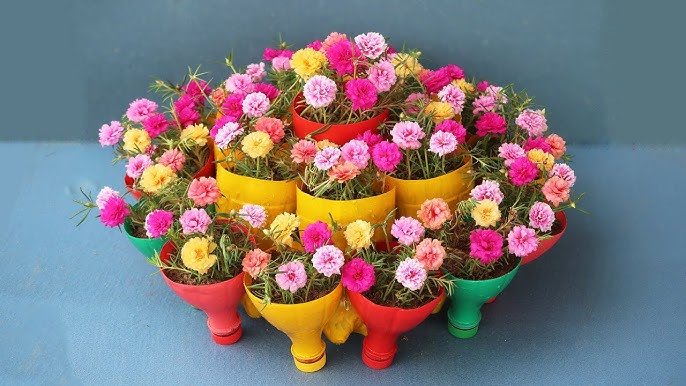
Using plastic bottles to grow purslane is eco-friendly, convenient, and practical, especially for those without traditional garden space.
Benefits include:
- Recycling: Reuse old plastic bottles, reducing waste.
- Space-efficient: Ideal for small apartments, balconies, or kitchen counters.
- Water-saving: Bottles retain moisture, reducing frequent watering.
- Easy propagation: Perfect for growing purslane from cuttings.
- Rapid growth: Purslane thrives in small containers, producing abundant leaves.
Plastic bottle gardening allows you to grow purslane all year round, providing a continuous supply of fresh greens.
3. Materials Needed for Purslane Bottle Gardening
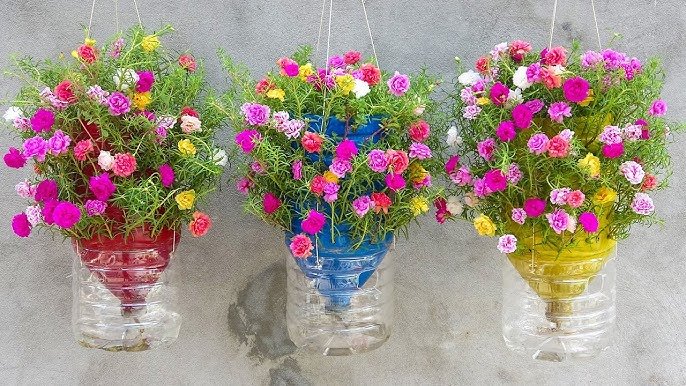
Before starting, gather these materials:
- Plastic bottles (1.5–2 liters recommended)
- Potting soil or well-draining compost mix
- Purslane cuttings or seeds
- Sharp scissors or craft knife
- String, wire, or hooks (optional, for hanging bottles)
- Spray bottle or watering can
Optional: liquid organic fertilizer such as compost tea or seaweed extract for faster growth.
With these simple materials, you can create a productive, low-maintenance purslane garden.
4. Preparing Your Plastic Bottle Planter
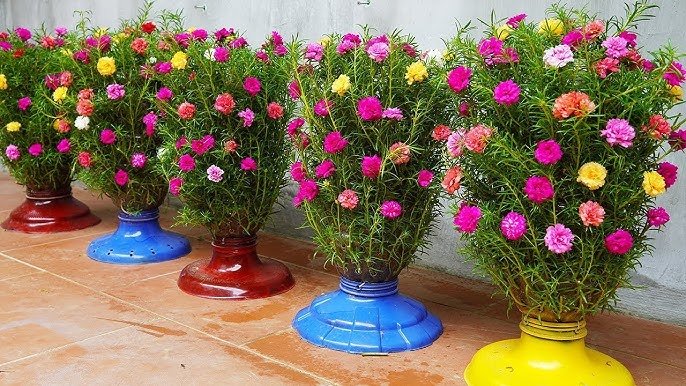
Follow these steps to turn a plastic bottle into a functional purslane planter:
- Clean the Bottle:
Remove labels and rinse thoroughly to eliminate any chemical residues. - Cut a Planting Opening:
Cut a rectangular or circular opening along the side of the bottle for easy access to soil and planting. - Add Drainage Holes:
Punch 4–5 small holes at the bottom of the bottle to prevent waterlogging. - Optional Hanging Setup:
Use holes near the top and thread a string or wire for vertical hanging. This is perfect for space-saving vertical gardens. - Add Soil:
Fill the bottle with 3–4 inches of loose, well-draining soil or a mix of compost and sand for aeration.
Your bottle is now ready for planting purslane cuttings or seeds.
5. Propagating Purslane from Cuttings
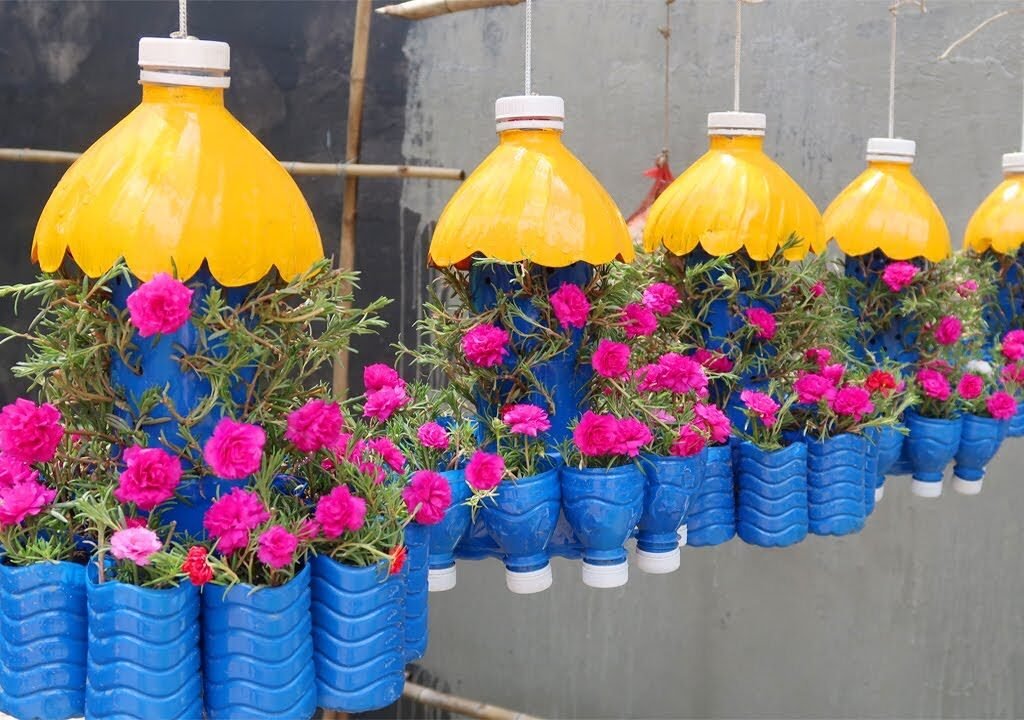
Purslane grows exceptionally well from cuttings, which is faster and easier than starting from seeds.
Steps to propagate from cuttings:
- Select Healthy Stems:
Choose a healthy, succulent stem from an existing purslane plant. Cut a 3–5 inch piece with at least a few nodes (leaf joints). - Remove Lower Leaves:
Strip the leaves from the bottom 1 inch of the cutting to prevent rot when planted in soil. - Plant the Cutting:
Insert the stripped end 1–2 inches into the soil in your prepared plastic bottle. Press the soil gently around it. - Water Lightly:
Mist the soil with water to keep it moist but not soggy. - Provide Light:
Place the bottle in a bright area with indirect sunlight or near a grow light.
Roots usually form within 7–10 days, and new growth appears within 2 weeks.
6. Caring for Purslane in a Bottle
Once your cuttings or seeds have been planted, proper care ensures healthy growth:
- Watering: Keep the soil slightly moist, but avoid overwatering. Succulent leaves store water, so purslane tolerates short dry periods.
- Light: Provide 4–6 hours of sunlight per day. Indoor growers may use a grow light for 12 hours daily.
- Fertilization: Feed weekly with diluted organic fertilizer or compost tea to encourage dense growth.
- Pruning: Trim overgrown stems to promote branching and a fuller plant.
Purslane is hardy and low-maintenance, thriving in warm temperatures between 18–30°C (65–85°F).
7. Harvesting Purslane
Purslane leaves and stems can be harvested multiple times:
- Cut-and-come-again: Snip outer stems when they reach 3–4 inches, leaving the inner stems to continue growing.
- Full harvest: Cut entire stems near the soil level once plants are large and mature.
- Continuous harvest: Succession planting with cuttings every 2–3 weeks ensures a constant supply.
Fresh purslane can be eaten raw in salads, lightly sautéed, or added to soups and stews for a nutritious boost.
8. Advantages of Bottle Gardening for Purslane
Plastic bottle gardening provides several advantages for growing purslane:
- ✅ Compact and portable: Ideal for small indoor spaces or balconies.
- ✅ Sustainable: Reuses plastic bottles and reduces garden waste.
- ✅ Efficient water use: Soil retains moisture, reducing frequent watering.
- ✅ Rapid growth: Purslane grows quickly, producing a dense mat of leaves.
- ✅ Multiple harvests: Cut-and-come-again method ensures continual yield.
This approach makes gardening easy, affordable, and environmentally friendly.
9. Common Problems and Solutions
Even hardy purslane may face a few challenges:
- Yellow or wilted leaves: Usually caused by overwatering or nutrient deficiency. Adjust watering and provide organic fertilizer.
- Slow growth: Ensure enough sunlight and avoid overcrowding plants.
- Pests: Aphids or snails may appear. Remove manually or use neem oil.
- Leggy growth: Move bottles to brighter light to encourage compact growth.
With careful observation, these problems are easy to prevent and fix.
10. Expanding Your Bottle Purslane Garden
Once you’ve mastered a single bottle, you can expand your purslane garden:
- Hang multiple bottles vertically to create a green wall.
- Grow purslane alongside other herbs or leafy greens for variety.
- Stagger cuttings every 1–2 weeks for a continuous harvest.
- Place bottles on windowsills, balconies, or kitchen counters for easy access.
This creates a sustainable, low-maintenance garden even in small spaces.
11. Culinary and Health Uses of Purslane
Purslane is not only nutritious but also incredibly versatile:
- Salads: Use raw leaves and stems with olive oil, lemon, and herbs.
- Stir-fries: Lightly sauté with garlic and soy sauce.
- Soups and stews: Add at the last minute to maintain crunch and nutrients.
- Smoothies: Blend fresh leaves for a healthy, green boost.
Its high omega-3 content, antioxidants, and vitamins make it a powerhouse addition to any meal.
12. Why Bottle Gardening is Perfect for Urban Homes
Bottle gardening allows urban dwellers to grow fresh vegetables like purslane with minimal effort:
- 🌿 No garden? No problem: Recycled bottles create productive green spaces indoors.
- 💧 Water-efficient: Bottles retain moisture, reducing waste.
- 🥗 Fresh, organic food: Always have pesticide-free greens on hand.
- 🌎 Environmentally friendly: Promotes recycling and sustainable living.
Even in small apartments or crowded cities, bottle gardening makes fresh vegetable cultivation accessible.
Conclusion
Growing purslane in a plastic bottle is one of the simplest and most rewarding ways to enjoy fresh, nutrient-packed greens at home. By propagating from cuttings, caring for the plants, and using the cut-and-come-again method, you can enjoy continuous harvests without the need for large garden spaces.
Plastic bottle gardening is eco-friendly, space-efficient, and perfect for beginners or urban gardeners. With minimal effort, you can grow healthy, organic purslane for salads, soups, stir-fries, and more — all from recycled bottles in your home.
Start your bottle garden today and enjoy the taste, health benefits, and satisfaction of growing your own purslane at home!
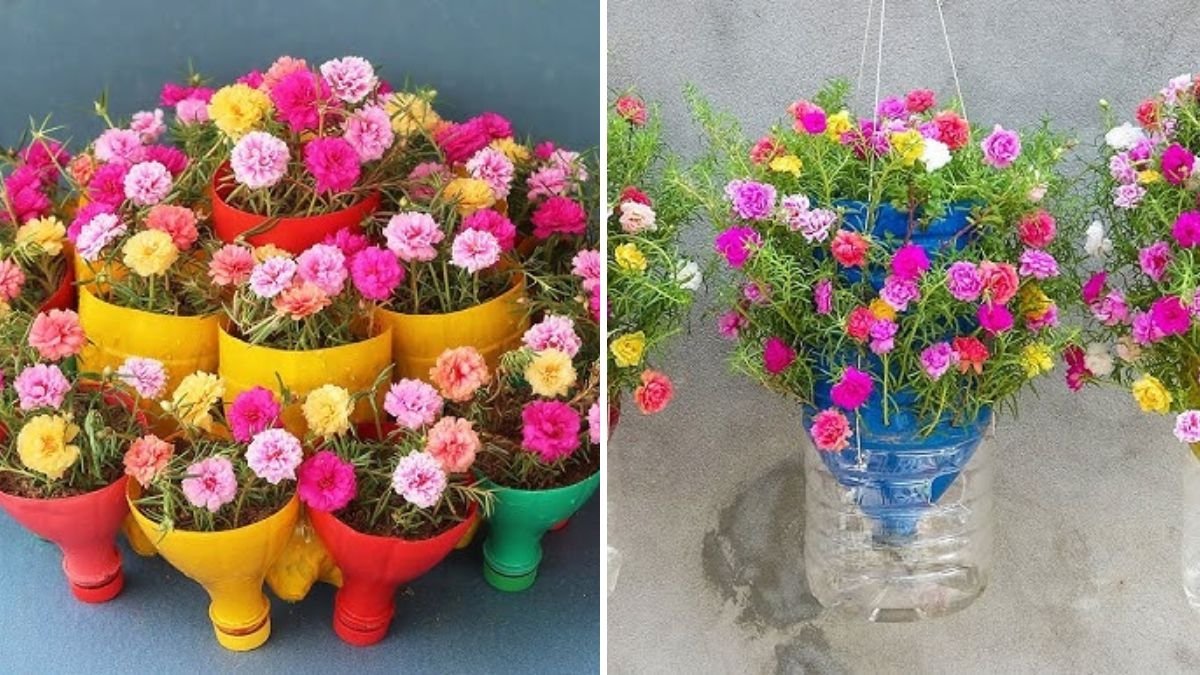
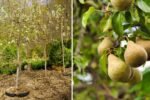
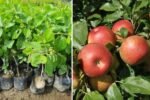
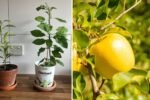
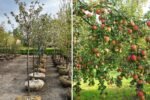

Leave A Comment